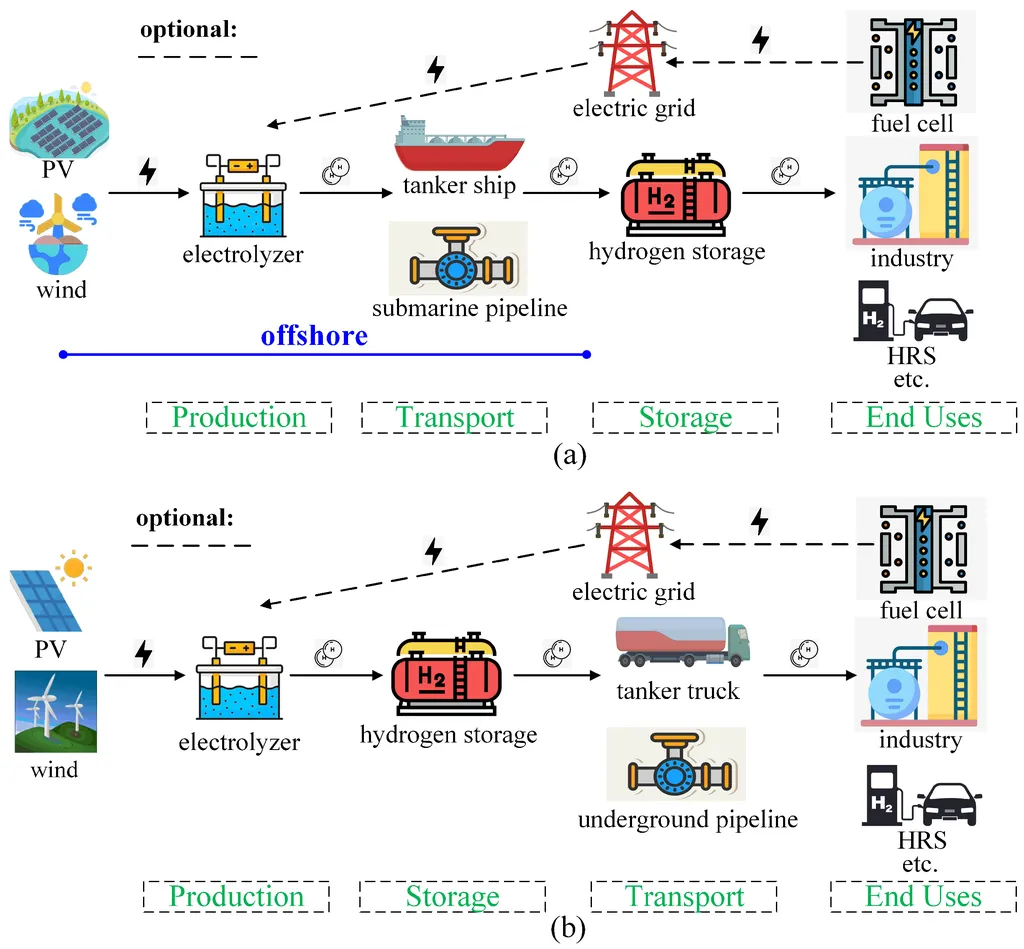In the quest for a sustainable energy future, a groundbreaking study led by Dongsen Li from the China Energy Engineering Group Jiangsu Power Design Institute Co., Ltd. is set to revolutionize how we integrate renewable energy sources into our power grids. Li’s research, published in the journal Energies, introduces a novel multi-time scale optimal scheduling strategy for electro-hydrogen coupling systems, a technology that could significantly enhance the efficiency and reliability of renewable energy integration.
At the heart of this innovation lies a sophisticated blend of deep reinforcement learning (DRL) and time convolutional networks (TCN). The electro-hydrogen coupling system, which combines electricity and hydrogen production, is crucial for advancing the use of renewable energy and achieving a low-carbon energy transition. However, the intermittent nature of renewable energy sources like wind and solar power poses significant challenges to the stable operation of power systems.
Li’s approach addresses these challenges by developing a multi-time scale optimization model that considers both day-ahead and real-time operational costs and deviations. “The key to our strategy is the ability to capture multi-time scale features of the coupling system,” Li explains. “By using a TCN, we can achieve a dynamic perception of environmental information, allowing our agents to make more informed decisions.”
The research introduces a modified Proximal Policy Optimization (PPO) algorithm, which enhances the traditional PPO by incorporating state feature enhancement, an adaptive clipping rate, and a prioritized experience replay mechanism. This modification significantly improves the training efficiency and stability of the algorithm, enabling it to handle the complexities of the electro-hydrogen coupling system more effectively.
One of the standout features of this research is its ability to reduce operational costs while enhancing the utilization of new energy sources. In a case study conducted in a specific region, the proposed strategy demonstrated a 12.67% reduction in cumulative cost over a 30-day test cycle compared to the standard PPO algorithm. This translates to substantial economic benefits for energy providers and consumers alike.
The implications of this research are far-reaching. As the energy sector continues to shift towards renewable sources, the need for efficient and reliable energy management systems becomes increasingly critical. Li’s multi-time scale optimal scheduling strategy offers a promising solution, paving the way for more stable and economical integration of renewable energy into our power grids.
The study, published in the journal Energies, which translates to ‘Energies’ in English, underscores the potential of advanced machine learning techniques in transforming the energy landscape. As we move towards a future dominated by renewable energy, innovations like Li’s will be instrumental in ensuring a smooth and sustainable transition.
The research not only highlights the technical advancements but also opens up new avenues for commercial applications. Energy companies can leverage this technology to optimize their operations, reduce costs, and enhance the reliability of their energy supply. Moreover, the findings suggest that further exploration into demand-response loads and supercapacitors could lead to even more efficient energy management systems.
As the energy sector continues to evolve, the integration of advanced technologies like DRL and TCN will play a pivotal role in shaping the future of energy management. Li’s research is a testament to the potential of these technologies, offering a glimpse into a future where renewable energy is not just a possibility but a reality.
For energy professionals, this research represents a significant step forward in the quest for sustainable and efficient energy solutions. By embracing these innovative technologies, the energy sector can achieve a more stable, reliable, and economically viable future. The journey towards a low-carbon energy transition is fraught with challenges, but with advancements like Li’s multi-time scale optimal scheduling strategy, the path forward becomes clearer and more promising.




